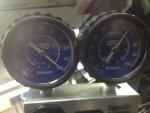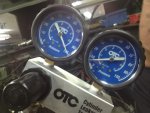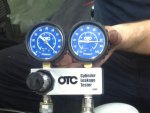- 2,052
- 58
- 48
- Location
- Milford / Michigan
What are the chances the rings could be broken in my engine? If they were in wrong from the beginning, would they be now ruined where I could not simply just flip them around? The thing is, the truck ran good when I first put it together, and then slowly went down hill loosing power and getting blowby. So what could have gone wrong if the problem is with the piston/cylinder assemblies?
Broken rings?
Rings installed wrong by the supplier? If so, can I orient them correctly or are the rings trashed?
Its getting late tonight but I am going to try cleaning one head up, throwing a new gasket on and torquing it down to perform a leak down test. From this I will be able to determine if I am getting leaks past the valves or cylinders. Since the manifolds are off, I will be able to see/hear the ports if they are leaking air. If I hear air hissing from deep in the engine then I know its a problem with the piston rings.
Well here goes to a long night, wish me luck and lots of patience.
Broken rings?
Rings installed wrong by the supplier? If so, can I orient them correctly or are the rings trashed?
Its getting late tonight but I am going to try cleaning one head up, throwing a new gasket on and torquing it down to perform a leak down test. From this I will be able to determine if I am getting leaks past the valves or cylinders. Since the manifolds are off, I will be able to see/hear the ports if they are leaking air. If I hear air hissing from deep in the engine then I know its a problem with the piston rings.
Well here goes to a long night, wish me luck and lots of patience.








